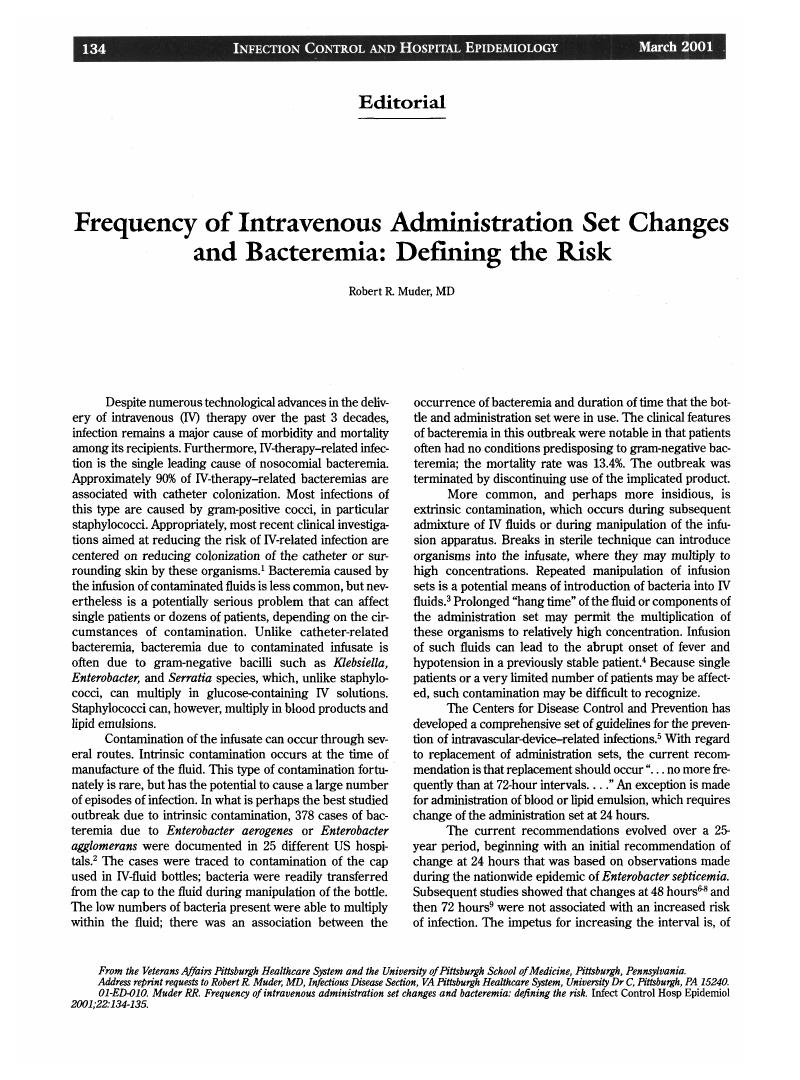Crossref Citations
This article has been cited by the following publications. This list is generated based on data provided by Crossref.
Graeber, Barbara D.
2001.
Frequency of Intravenous Administration Set Changes and Bacteremia: Defining the Risk.
Infection Control & Hospital Epidemiology,
Vol. 22,
Issue. 08,
p.
476.
Macías, Alejandro E.
2001.
Optimal Frequency of Changing Intravenous Administration Sets: Is It Safe to Prolong Use Beyond 72 Hours?.
Infection Control & Hospital Epidemiology,
Vol. 22,
Issue. 08,
p.
475.
Rickard, Claire M
Vannapraseuth, Boun
McGrail, Matthew R
Keene, Lorraine J
Rambaldo, Sam
Smith, Chloe A
and
Ray‐Barruel, Gillian
2009.
The relationship between intravenous infusate colonisation and fluid container hang time.
Journal of Clinical Nursing,
Vol. 18,
Issue. 21,
p.
3022.
Lelieur, F.
Novais, T.
Marcel, M.
Favier, C.
Piriou, V.
and
Cabelguenne, D.
2016.
Stratégie d’optimisation de la prise en charge médicamenteuse péri-opératoire.
Le Pharmacien Hospitalier et Clinicien,
Vol. 51,
Issue. 4,
p.
312.
Lelieur, Florence
Cabelguenne, Delphine
Marcel, Marie
Favier, Claudine
and
Piriou, Vincent
2017.
Perfusions IV de médicaments : principes de sécurisation.
La Revue de l'Infirmière,
Vol. 66,
Issue. 231,
p.
41.
Andersen, Bjørg Marit
2019.
Prevention and Control of Infections in Hospitals.
p.
535.
Díaz-Martínez, Angélica
and
Rubio-Arias, Pablo
2022.
Identificación de bacterias presentes en tres soluciones intravenosas en un período de 72 horas.
Revista Científica de la Facultad de Ciencias Veterinarias,
Vol. XXXII,
Issue. single,
p.
1.



